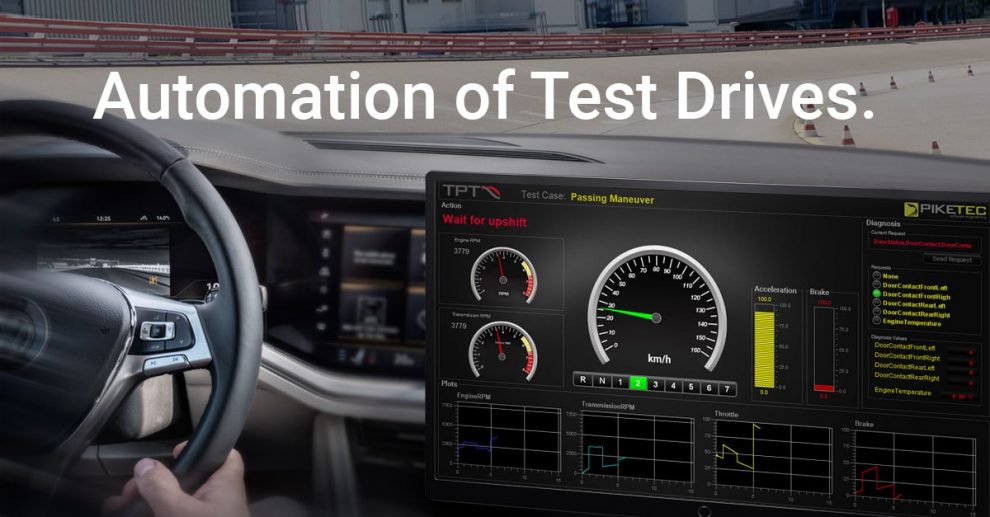While test driving for software release tests is done manually by default using application tools such as CANape or INCA, for many people the automation of the driving tests is still a step yet to be taken.
The automation of driving tests can be executed conveniently with TPT. Using TPT not only enables test automation and smooth communication with various application tools, but also has practical benefits that may be necessary in times where keeping physical distance is commonplace.
Specifically, communication with various application tools allows live observation of system data and manipulation of particular system inputs. The test case not only communicates with the vehicle, but simultaneously also with the driver. In order to enhance readability of the test performance (and because it looks really neat) a dashboard allows for easy interaction with the driver through control items, text and acoustic messages.
Possible integrations are ETAS INCA, Vector CANape and CANoe, or via CAN and XCP directly (Read more about this here).
Moreover, because measurement data is assessed automatically, yielding comprehensive test results, TPT can be used while driving, without an operator on the co-driver seat. The application tool does not need to be triggered manually by a second person anymore and TPT does all the work via pre-definable test cases, which is immensely time-saving.
In fact, in order to keep physical distance towards other people, being able to execute driving tests with only one person turns out to be not only handy, but indeed mandatory.
This way TPT enables automatized testing of driving tests, facilitates measurement data assessment and, lastly, is also quite practical for one-person use.
Feel free to browse through our Glossary of Test Terms in case you are looking for terminological explanations.
